The Role of Union Dissolution & Repartnering on Health Later in Life
Family Profile No. 12, 2017
Authors: Elizabeth Kovert, Matthew R. Wright, Anna M. Hammersmith, Susan L. Brown, & I-Fen Lin
Research indicates that widowhood, which has declined in recent years, is often negatively associated with well-being in later life. Yet, little is known about the negative consequences in later life from gray divorce, which has doubled since 1990 (Brown & Lin, 2012). Here, we examine the link between gray divorce (divorce after age fifty) and well-being to address whether repartnering helps to offset some of the negative consequences of marital dissolution (Carr & Springer, 2010). Additionally, because men tend to reap more benefits from marriage than women, it is important to consider gender differentials (Simon, 2002). Using data from the 2010 Health and Retirement Study (HRS), we examine depressive symptoms and alcohol use by dissolution type, repartnership, and gender.
- Gray divorced women and men are more often repartnered than are either widows or widowers.
- Among divorced women, 76% are single and 24% have repartnered.
- For widows, 93% are single and just 7% have repartnered.
- Among divorced men, 45% are single and 55% have repartnered.
- For widowers, 73% are single and 27% have repartnered.
Figure 1. Repartnership by Dissolution Type and Gender
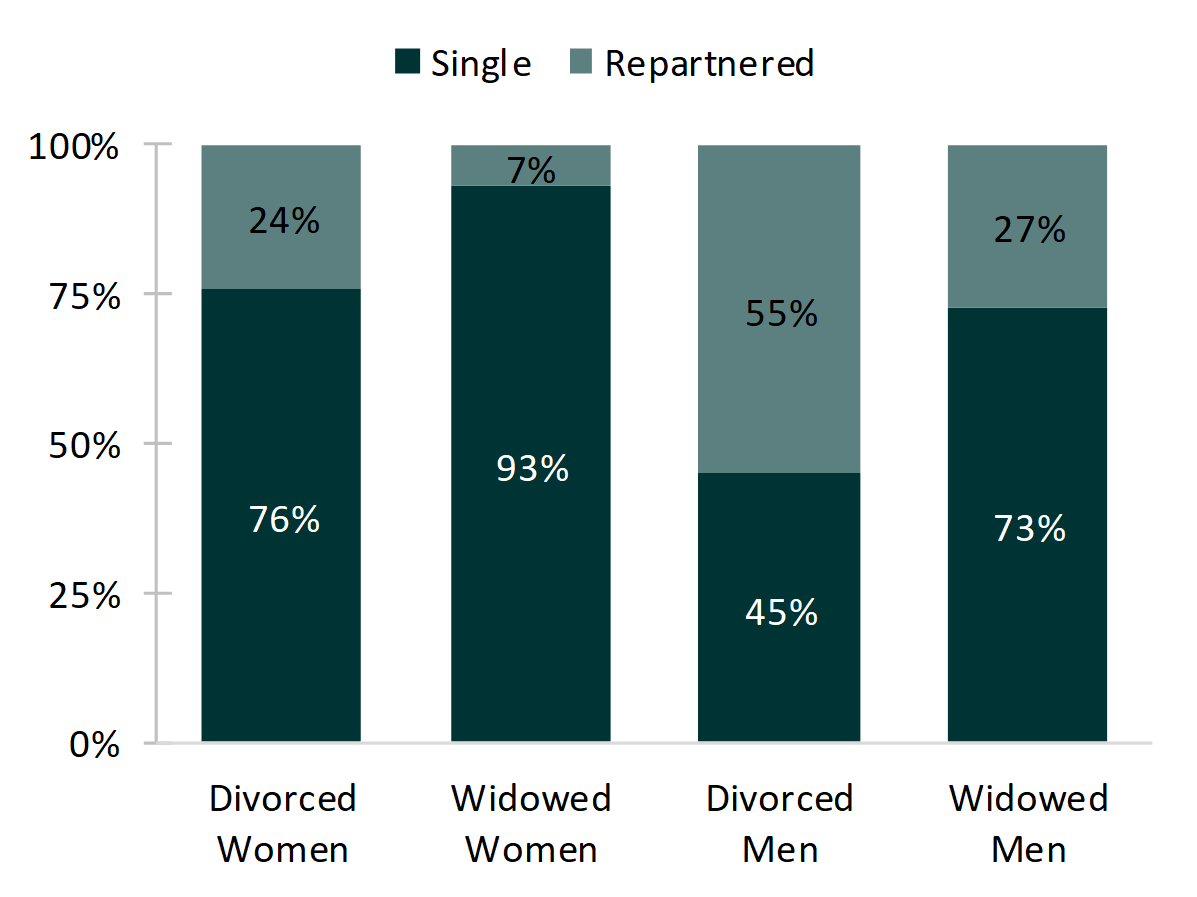
Depressive Symptoms of Gray Divorce and Widowhood
- Depressive symptoms do not vary by dissolution type.
- Individuals who repartner have lower levels of depressive symptoms than those who remain single.
Figure 2. Depressive Symptoms by Dissolution and Repartnership
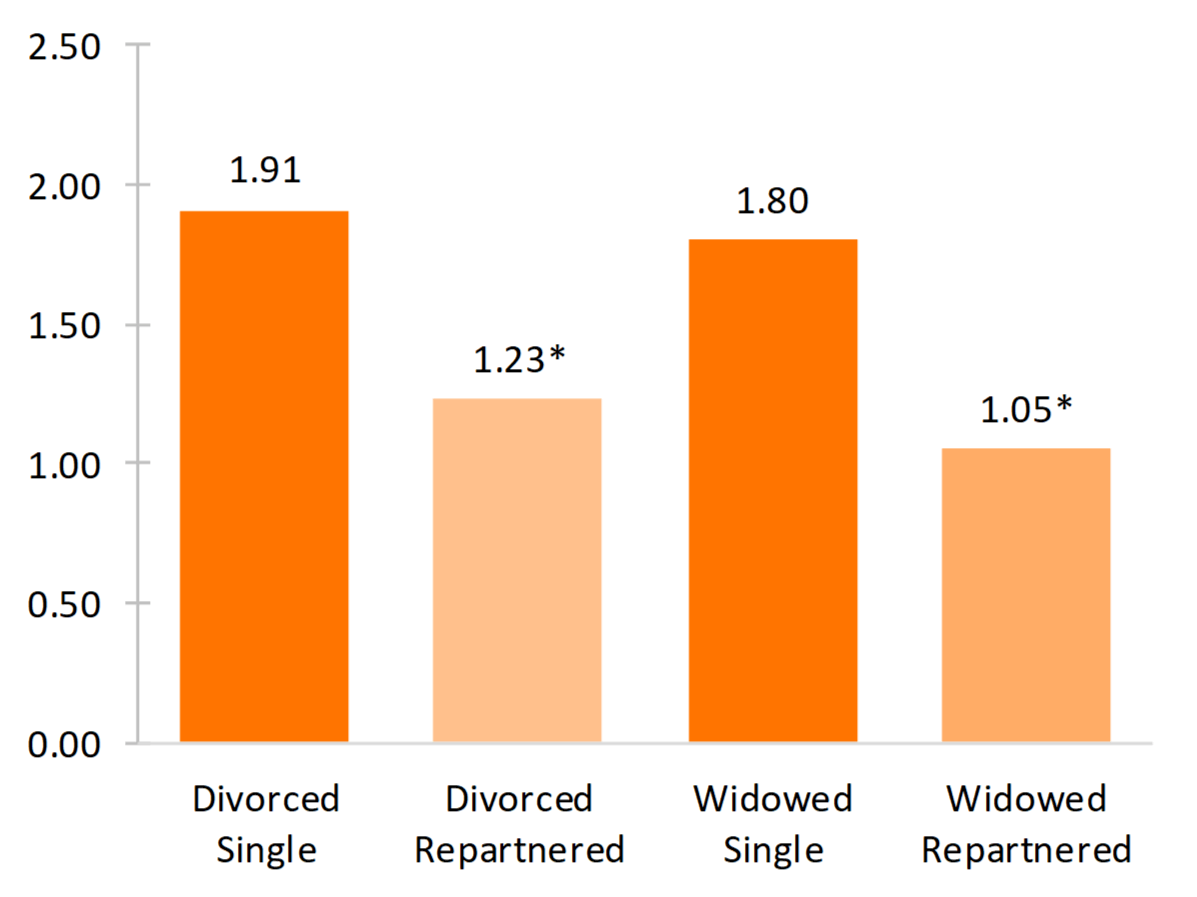
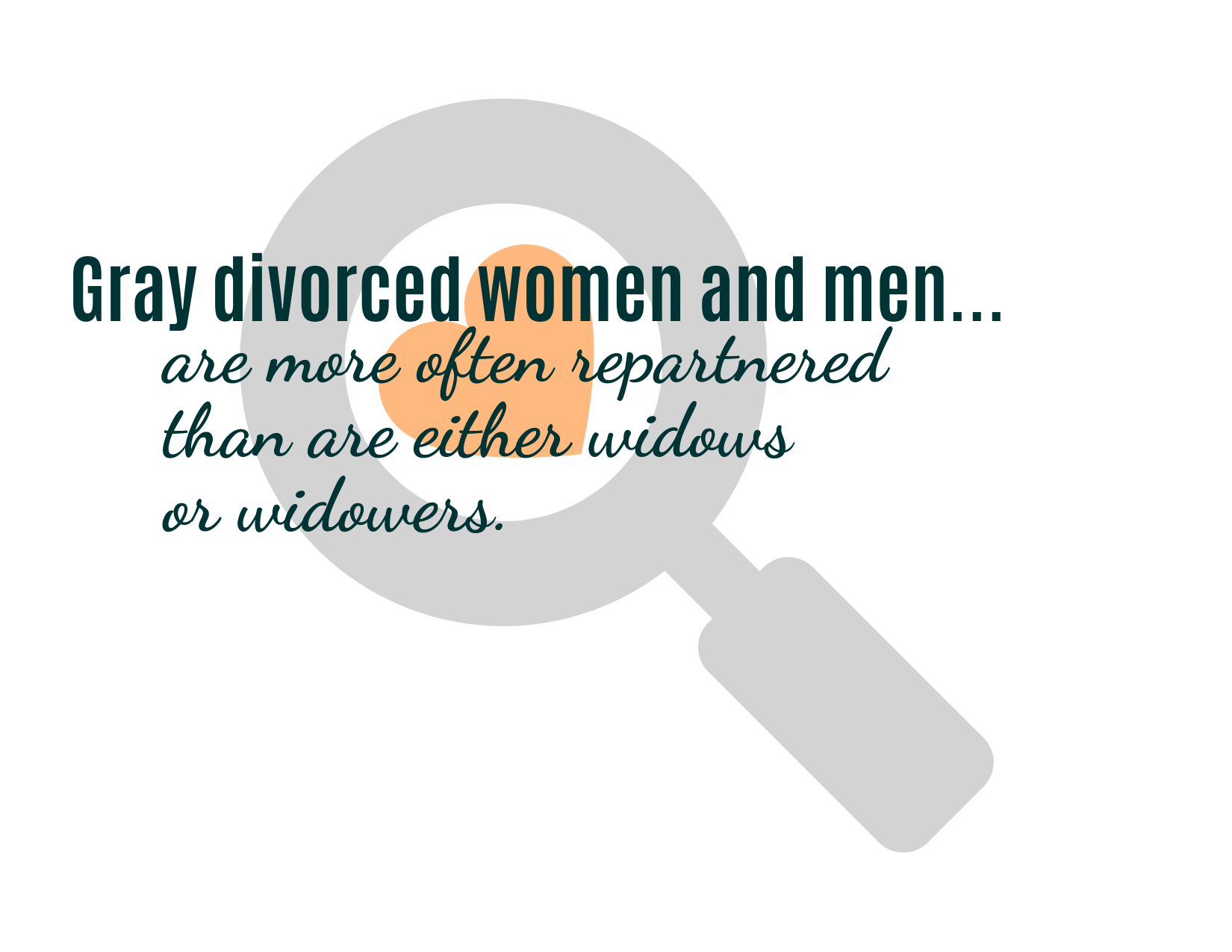
Depressive Symptoms of Gray Divorce and Widowhood by Gender
- Divorced women report more depressive symptoms than men, regardless of repartnership.
- However, there are no differences in depressive symptoms among widowed women and men.
Figure 3. Depressive Symptoms for Dissolution and Repartnership by Gender
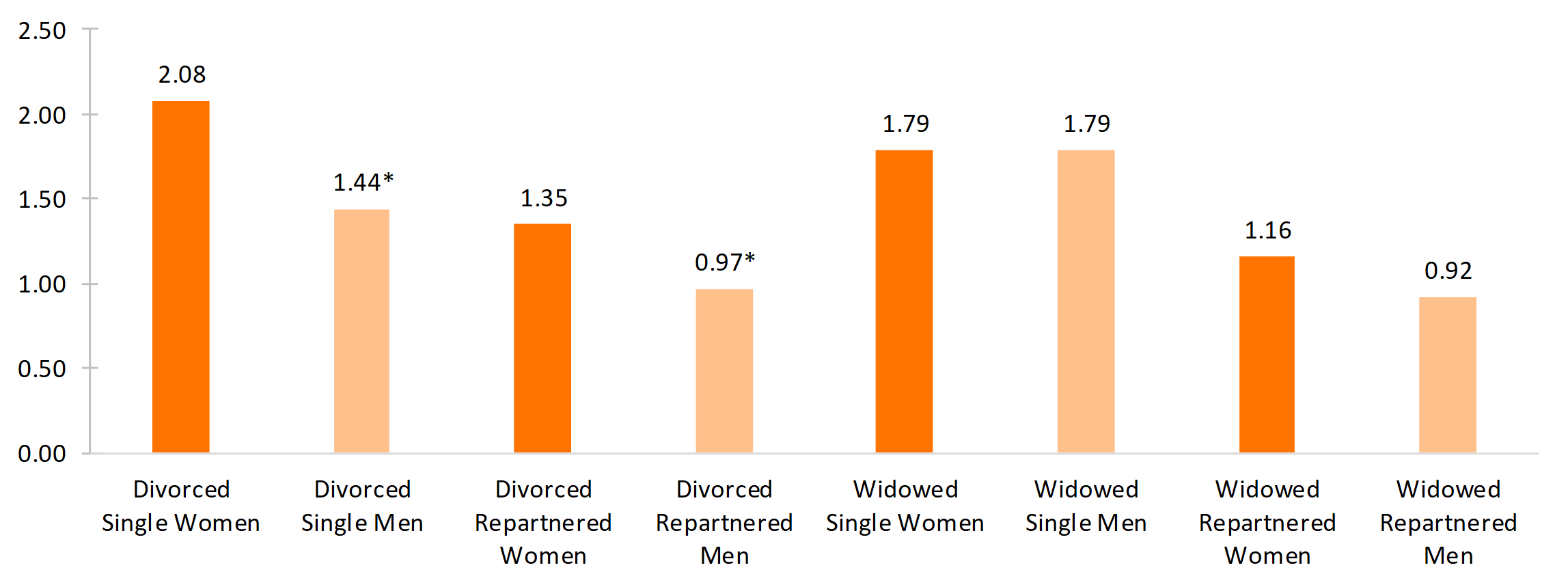
Alcohol Use by Gray Divorce and Widowhood by Gender
- Divorced individuals tend to be heavier drinkers than widowed individuals.
- Divorced men who remain single report the most alcohol use.
- Widowers consume higher levels of alcohol than widows regardless of repartnership.
Figure 4. Alcohol Use for Dissolution and Repartnership by Gender
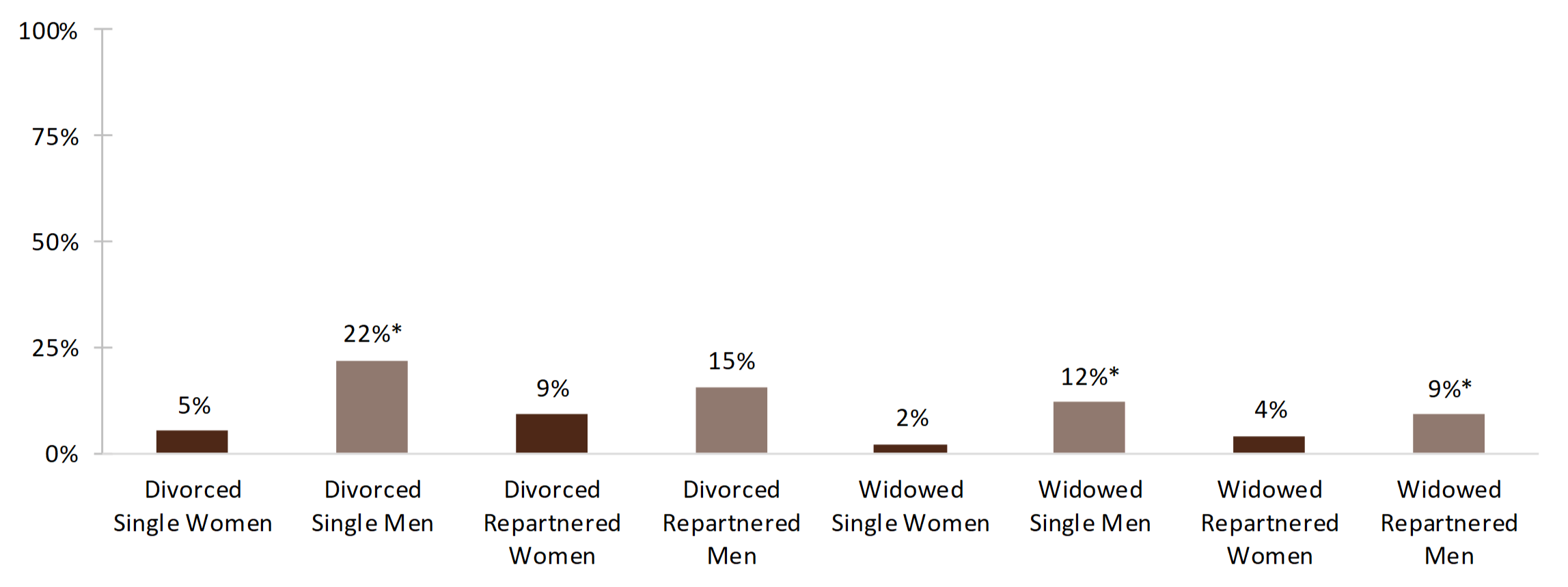
References
- Brown, S. L., & Lin, 1.-F. (2012). The gray divorce revolution: Rising divorce among middle-aged and older adults, 1990-2010. The Journals of Gerontology, Series B: Psychological Sciences and Social Sciences, 67, 731-741.
Carr, D., & Springer, K. W. (2010). Advances in families and health research in the 21st century. Journal of Marriage and Family, 72, 743-761.
Simon, R. W. (2002). Revisiting the relationships among gender, marital status, and mental health. American Journal of Sociology, 107, 1065-1096.
Suggested Citation
- Kovert, E., Wright, M. W., Hammersmith, A. M., Brown, S. L., & Lin, 1.-F. (2017). The role of union dissolution and repartnering on health later in life. Family Profiles, FP-17-12. Bowling Green, OH: National Center for Family & Marriage Research. https://doi.org/10.25035/ncfmr/fp-17-12
Updated: 11/07/2025 04:41PM


